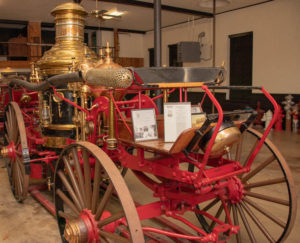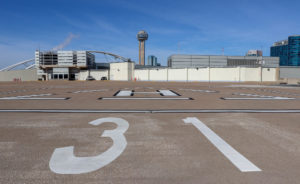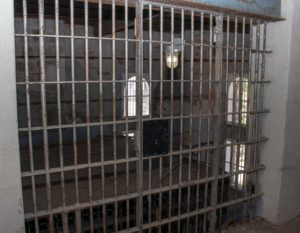Watching Over North Texas’ Tollways: The NTTA Safety Operations Center
If you live in or visit the DFW area, chances are high that you have either gone on or at least seen the signs for the many toll roads spanning the Metroplex. It’s a complex infrastructure network, spanning 980 miles in the region. From Frisco to Grand Prairie, the North Texas Tollway Authority(NTTA) can probably get you there should you desire to take a toll road versus the freeway. But what goes on beyond what most drivers see to keep traffic flowing and the roads safe? I found out recently, with a visit to the NTTA Safety Operations Center(SOC), located in Plano.

Opened in 2015, the SOC is the 24/7 central “control room” for the five tollways that make up the NTTA system. Showing me around the facility was their director of system and incident management, Eric Hemphill. After taking me onto the SOC floor, the first thing that caught my attention was the huge video wall, full of surveillance cameras.

Eric explained that there are nearly 2000 cameras in the system, and that they cover about 70% of NTTA’s footprint..or should I say tire tracks?


All these cameras provide the folks in the SOC with a real-time view of road conditions. They work hand in hand with sensors built in to the pavement that detect when something goes awry. One example is when a wrong-way driver enters the tollway. Once detected, a big red message will flash below the video screen, alerting SOC dispatchers to pull up that associated camera and notify law enforcement.

Speaking of dispatchers, they are the heart of the SOC. There were four on duty when I visited, although staffing varies based on conditions. Every dispatcher has a different job, from monitoring the alarms and cameras to fielding 9-1-1 calls.


9-1-1? Isn’t that handled by the individual cities? It is, however, the SOC serves as a secondary 9-1-1 answering and dispatching center for calls that originate on the NTTA system. As Eric explained, say you have an accident. When you dial 9-1-1, your call first goes to the municipality in which you are located in. After verifying that fire/EMS assistance isn’t needed, you will be transferred here. A dedicated DPS dispatcher will then send state troopers your way.
What if your car suddenly breaks down? Thanks to all those cameras and some advanced technology, the SOC is notified when a camera detects a non-moving object(such as a stalled car). From there, a dispatcher will send a roadside assistance unit.

Roadside assistance units, provided free of charge, help with jump-starts, flat tires, and more. They will even provide you with a small amount of gas should you run out and be stranded. These folks stay busy – I heard a constant stream of phone calls and radio traffic. However, the winter season is when it gets real crazy. Of course, prevention is the best strategy, hence why the SOC has pavement temperature sensors all throughout the system.

With these sensors, dispatchers are able to know if the road is getting to a dangerously low temperature, and ensure sand trucks and other personnel are mitigating any risks. Another part of prevention is notification of important messages to drivers – that’s why there are overhead message boards at various points. These message boards are controlled right here at the SOC.

Having images of funny highway sign messages in my head, I asked Eric if the employees could change the text to whatever they like. His response – “They can, but only once, because they won’t be working here afterwards.” Accurate answer, I’m sure!
As we concluded the tour, I have to admit I was pretty impressed. Having lived in the North Texas area my whole life and taken the various tollways countless times, I had no idea there was this much technology(or cameras) in the background. The roadside assistance vehicles were something that I’ve seen before in the past, but the many other technologies in the SOC help keep drivers and first responders safe as they get to where they need to go!

Thanks to the folks at the North Texas Tollway Authority for showing me around to make this post possible!










Great adventures… ?
On Sun, Aug 26, 2018, 3:22 AM Eric Explores the World wrote:
> Eric Men posted: “If you live in or visit the DFW area, chances are high > that you have either gone on or at least seen the signs for the many toll > roads spanning the Metroplex. It’s a complex infrastructure network, > spanning 980 miles in the region. From Frisco to Grand Pr” >